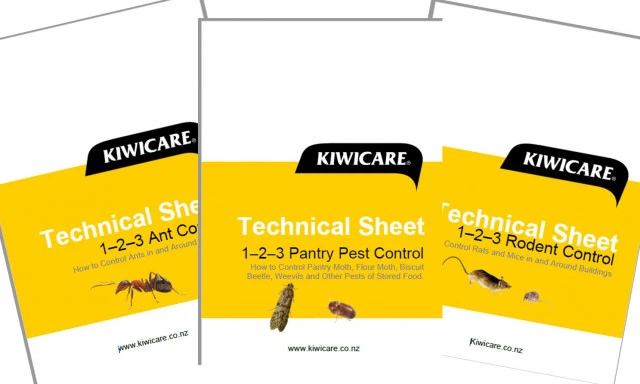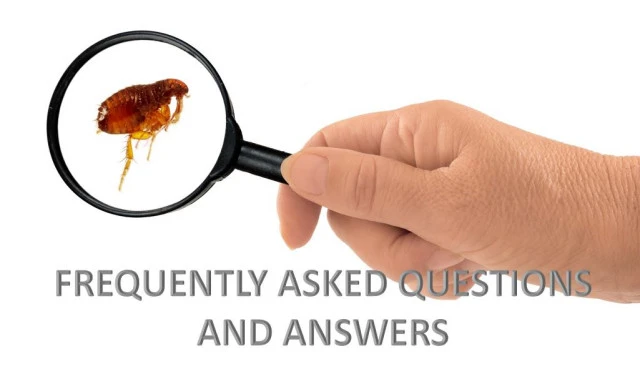Pests Outdoors
Homeowners in New Zealand contend with several pests such as German cockroaches, bed bugs and some stored product pests, that exclusively live indoors. However, many customers contact us because pests, such as ants, spiders, other cockroach species and rodents, have invaded their home and are causing a nuisance or worse. In fact, most of the home pests we deal with in New Zealand originate outdoors.
Too often, because the pests are seen indoors, this is the only place getting rid of them is attempted; 'if indoors is where they’re seen, this must be where the problem needs to be addressed'. The thinking is ‘if you get rid of them inside the problem is solved, out of sight out of mind’. This is not the case. For most of these pests, this strategy only controls foragers and casual intruders, there are often plenty more where they came from. This becomes plain in a few days when the problem returns.
So, you need to "think outside the box," i.e., outside the home. Inspect and investigate so you can find the source of the problem. Although you will not always be successful, with thoroughness, 90% of the time you will, and your work will result in a longer-term solution; not a temporary fix.
Investigating the perimeter does not mean looking at the building in just the horizontal plane and it does not mean just walking around the exterior looking at the foundations. Also look up, around, inside and under anything around the outside of the house and in the garden. For example, look:
Look Up
- Look at the roofline of the house and the eaves — are there gaps, are the soffit vents screened, are there other places pests could get in?
Seal the possible pest entrances. - Look in the gutters — are they full of debris, are they blocked and holding water, do they drain fully, do they leak, do they drip water next to the foundation?
Clear gutters and stop water dripping around foundations. - Look at plants and trees close to the house — do they touch the house, do they hang over the roof, do they have insect infestations that attract other insects?
Cut back vegetation so that it does not provide access for pests. - Look for security lights and other outdoor lighting that could attract insects — are lights mounted away from the structure and directed back toward the building, do high-intensity lights use sodium vapour bulbs or insect attracting white/blue bulbs?
See here for advice on lighting that does not attract insect pests.
Look Around
- Look around the foundation, the rest of the section and (to the maximum extent possible) adjacent properties. Look for evidence of pests and pest activity.
Use any signs to identify pest harbourages and travelling routes. - Ask yourself ‘are there ground covers, such as ivy, Tradescantia, periwinkle, etc., that provide cover and protection for insects and rodents?
Remove with herbicide or cut back cover. - Are vines or ivy growing up the side of the house?
Cut vegetation down to well below the eaves. - Are ornamental plants infested with sap-sucking insects that would attract and provide a food source for ants or other insect pests?
Control sap-sucking insects and/or prevent ants or other pests climbing vegetation and farming the sapsuckers using LawnPro Protect. - Are the pavers, flagstones, landscape timbers, sand boxes and other objects on the ground, providing moisture and harbourage to pests?
Use NO Ants Ant Sand, LawnPro Protect to control insect pests in their nests. - Are trees overhanging the roof providing access to the roof for rodents, ants and other pests.
Ensure overhanging trees are cut 2 metres away from roofs. - Are there pipes, wires and other utility lines running up the sides of the buildings.
Investigate methods of preventing pests using these as highways into the house. - Are there holes in the wall, are there cracks in the foundation, are there gaps under and around doors, is the sealant around window and door frames failing?
Seal gaps around pipes and cables with silicone or builder’s foam. - Are expansion joints open or filled with organic debris?
Clear debris to ensure good ventilation. - Are insects trailing along the foundation, up the walls, along wires, up the deck support posts and along the deck?
Spray surfaces pest insects are training over with NO Bugs Super. - Are there leaking water pipes, condensation, broken down-spouts, the ground sloping towards the foundation, or any other water source that allows moisture to collect next to the foundation?
Repair leaks and ensure ground slopes to carry water away from foundations. - Are there potted plants, bird feeders, and pet dishes that provide food and attract pests?
Ensure all food is kept in sealed containers and out of reach of pests. Clean pet dishes after use. - Are there old stumps and dead trees in the garden?
Remove stumps and dead trees. - Is there a woodpile and is it against or close to the house?
Move woodpile to somewhere separate from the house or treat it to eliminate insects and rodents. - Is there mulch in the garden, if so is it more than an inch deep?
Ensure mulch has been well rotted before use in flowerbeds close to the house. - Is there a compost heap?
Never use cooked food scraps in your compost, only use vegetable matter and compost it thoroughly before use in the garden. - Is there an irrigation system?
Check the irrigation system is not leaking and that it is not wetting the foundations. - Is there a creek, drainage ditch, pond or other body of water on or near the property?
Check the banks for rat burrows. Keep the areas around water clear. - Where are the bins and are they pest-proof?
Ensure bins are kept clean and fitted with lids.
Look Inside
- Look inside everything you find on the property. Is there anything in the water meter box, accessible electrical junction boxes and other service panels (do this carefully)?
Check all hollow items for pest nests or activity. - Are food items or seeds being stored in outdoor storage sheds?
Ensure these are in pest-proof containers. - Are there tires, cans, pots, and other containers that collect organic debris and water?
Remove these or clear them of water and debris. - Are there playhouses and outdoor play equipment?
Check these for pest nests and activity and ensure they are clean and not collecting water.
Look Under
- Look under the house for evidence that pests are getting in.
Check for rodent droppings, broken vents, ant columns etc. - Look under anything that can be picked up and moved without injuring yourself or damaging property.
Look for pest nests or activity, treat as appropriate for pest. - Are insects and other animals nesting under splash blocks, landscape timbers, flagstones or other items lying directly on the ground?
Look for pest nests or activity, treat as appropriate for pest. - Is there trash and debris stacked on the property? Is firewood stacked directly on the ground?
Clear away debris and firewood. - Is there leaf litter and other debris next to the foundation?
Keep foundations and bases of walls free from debris and vegetation which would provide pests cover.
By the time you’ve done all this investigation, you should have a pretty good idea where the pests are travelling, where they are coming from and where they are getting in, and you will have been able to greatly reduce the risk of infestation in your home.
David Brittain
Kiwicare


